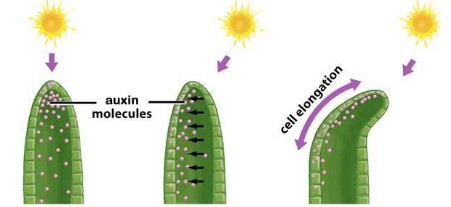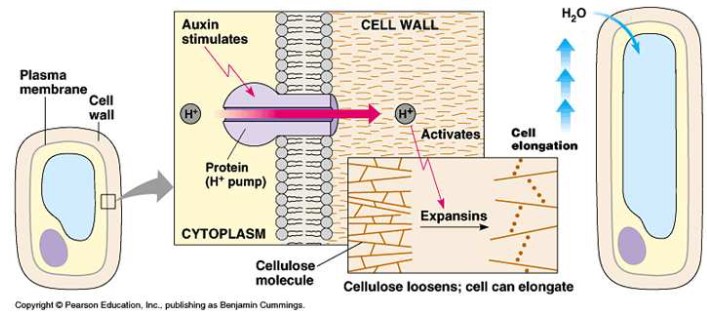Topic 9: Plant biology (HL)
9.3 Growth in plants
Meristem:
- Meristem tissues in all plants consist of undifferentiated cells (meristematic cells) that generate new cells for plant growth.
- Plant growth is generally indeterminate, which means cells will continue to grow indefinitely
- Meristems are areas where growth occurs and are composed of undifferentiated cells undergoing active cell division
- Apical meristems are at the tips of the roots and stems. They are responsible for primary growth of the plant
- Lateral meristems are responsible for secondary growth (increasing the diameter and thickness of the plant). They are located in cambium layer.
- Cells in the meristems undergo mitosis repeatedly to produce new cells and growth in a plant
- Root meristems are responsible for growth and extension of the root
- Shoot meristems creates cells responsible for shoot growth, but also create cells that will develop into flowers and leaves
- Auxillary buds: inactive meristem tissue. When the plant needs to grow a now branch, hormones will activate the bud and continue to grow.

Hormones:
- Hormones are chemical messages produced and released by one part of an organism that has an effect in another location
- One of the main plant hormones is auxin
- Auxins initiate growth of roots, regulate leaf development, and influence the development of fruits
- High concentration of auxin promotes the growth in shoot.
- Auxin can change the patterns of gene expression in shoot cell.
Tropisms:
- A tropism is growth or movement towards or away from an external stimulus, such as light, gravity or chemicals.
- Gravitropism is growth in response to gravity
- Phototropism is growth towards or away from an external light source.
- Generally in plants, shoots grow towards the light (positive phototropism) and roots grow away from the light (negative phototropism).
- Phototropism is essential for plants to make sure they grow towards the sunlight.
- Auxins are plant hormones that promote positive phototropism in plants
- Auxin concentration will increase in an area opposite to the direction of sunlight, thereby stimulating the fast growth of that area, leading to a turn of the shoot
Auxin efflux pumps:
- Phototropins (light receptors) in the tips of the plant detect sunlight.
- Axuin enters the cell by diffusion, influx transporter proteins.
- Axuin moves out of the cell by effiux transporter proteins.
- Transporter proteins can be activated/inhibited by stimuli such as sunlight.
- If the amount of sunlight is greater on one side of the plant, the phototropins trigger reactions that will cause the redistribution of auxin by efflux pumps to the dark side of the plant.
- High concentrations of auxins cause cells on the shaded side of the cell to swell and elongate.
- When auxin binds to a receptor in the nucleus, this activates a proton pump
- The proton pump moves H+ ions into spaces in the cell wall, decreasing the pH
- This results in the breaking of the hydrogen bonds between cellulose fibres, resulting in the swelling and elongation of these cells.
- As the cells elongate and swell on one side of the plant the stem starts to curve towards the light source because of this uneven growth.
- The plant now is growing towards the light source (phototropism).
- For gravitropism auxin is redistributed to the side of the gravity
- Auxin in this case inhibits cell elongation and as the top part of the root grows and extends, the root turns towards the direction of the gravitational pull
- This is opposite to phototropism


Micropropagation:
- Micropropagation is an in vitro process that produces large number of cloned identical plants
- Micropropagation depends on the totipotency of plant tissues
- Tissues from the stock plant are sterilized and cut into pieces called explants
- The explant is placed into a sterilized growth medium that contains plant growth hormones
- These hormones include auxin.
- Once the plant has roots and shoots, it can be transferred to soil
- Plant virus are usually transported in vascular tissue, which is not presented in meristems.
- Micropropagation of plants, allows for the production of virus free strains of plants
- It can also be used to produce plants with desirable characteristics much faster using less space
- You can also store little plantlets for long periods of times in liquid nitrogen, which would be valuable with endangered species.